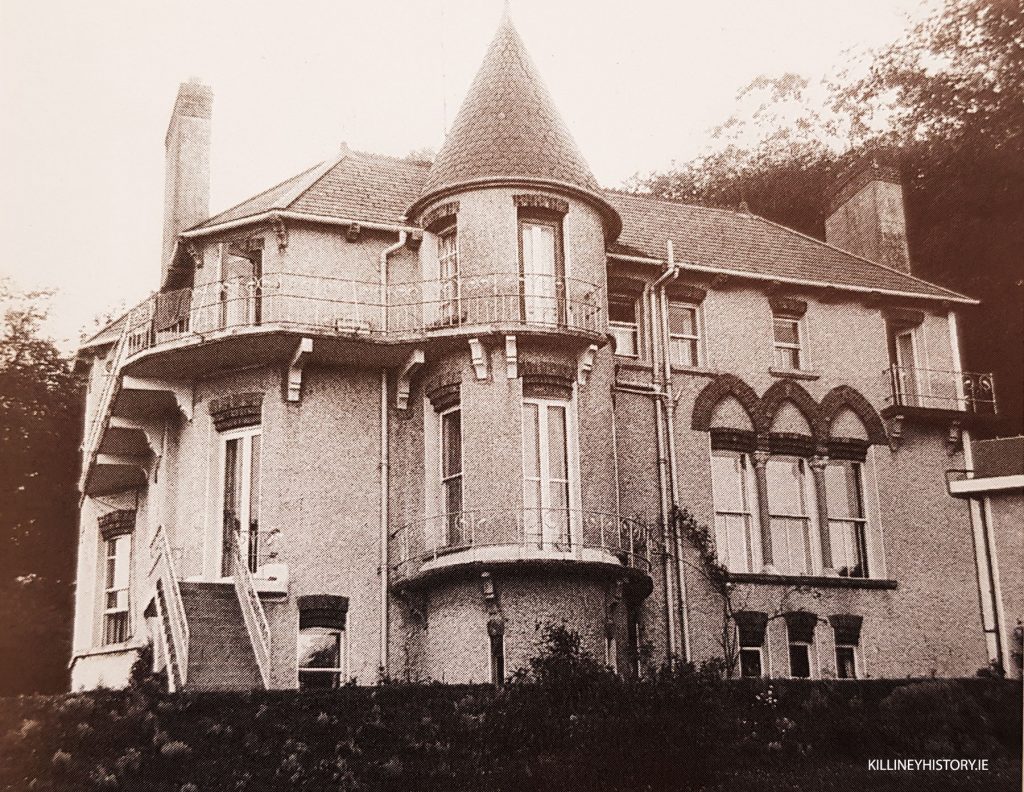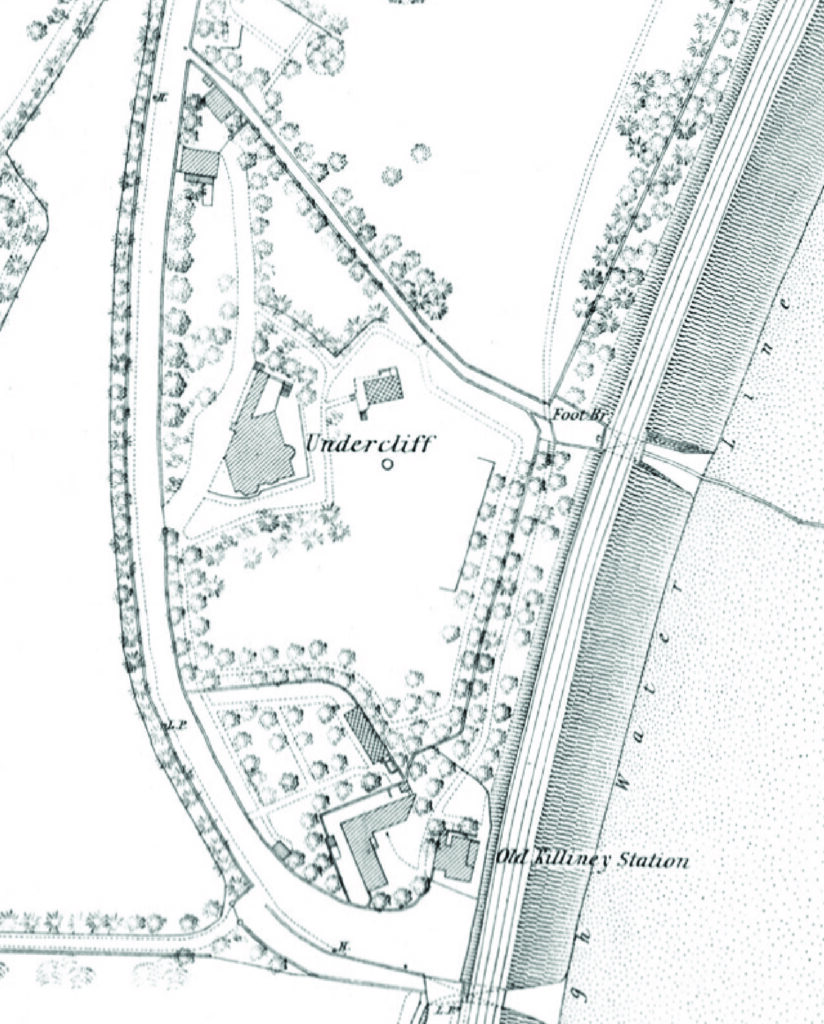The description and photograph below are from ‘The Architecture of Deane and Woodward’ by Frederick O’Dwyer, 1997.
The most successful architecturally is Francis Robinson’s Undercliffe, undoubtedly Woodward’s work and the apparent prototype from which the others were derived. The lease of Undercliffe was the first to be registered, on 13 February 1861, and it seems likely that it was also the first house to be started.
The contract for the house was awarded to James Douglass. He was later to build Deane and Woodward’s church at Rathmichael, County Dublin.
Undercliffe, like its neighbours, was built on sloping ground so that the basement was split-level and lit only from the garden front. The only level part of the site was the driveway, which was parallel to the road (Strathmore Road), and that is partially on made-up ground. The plan is basically L-shaped, with a triangular porch inserted between the arms. The granite architrave is similar to those of internal doorcases in the Kildare Street Club. The upper walls are supported on arches springing from a central column in the angle in the entrance hall. The secondary stairs is in a turret and joins the main staircase at a half-landing, lit by a characteristic triangular dormer. The fanlight over the front door is also triangular. There is a second turret on the garden side. The drawing-room and dining-room are at right angles to each other, a characteristic of Woodward’s houses. Each connects to an intercommunicating lobby in the turret, which in turn is surrounded by a balcony. Two of the bedrooms, on the first floor, also had balconies, one of which—around the turret—was extended in reinforced concrete along two sides of the house in the 1970s (an attempt was made to match the old work in detailing the extended balcony and balustrade). The staircase from the drawing-room to the garden is a concrete replacement of a timber original. The chimneystacks were rebuilt in the 1930s, but differ from their predecessors in detailing only; Victorian-style pots were affixed in 1996. The triple-arched dining-room windows, with their tall shafts, are also derived from the Kildare Street Club. The capitals here and throughout these earliest three houses have naturalistic carvings.
Fernside and Green Hill had been completed by May 1862 when they are referred to in an agreement made between Exham and John Shaw, a Belfast merchant. Undercliffe makes its first appearance in Thom’s Directory in the same year.
The Killiney houses are all finished in stucco or dash, with stepped brick arches, brick dressings and the occasional limestone shaft and carved capital. They are smaller in scale than the granite-faced villas of 1858 and lack the elaborate door frames and fretted balusters of the grand designs. Like the wood-work, the chimney-pieces were probably provided by the builder, rather than designed by the architects. Nevertheless, the geometrical planning and arrangement of the facades more than compensate for the loss of such trimmings. Woodward shows that he could create a successful design to suit a relatively tight budget. One recalls Rossetti’s comment that the ‘chief characteristics of Woodward’s genius as an architect were elevation and harmony in the whole’.


